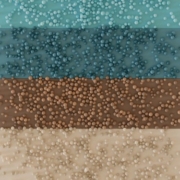The AngularAndSpringWithMaps project has been converted from REST endpoints to a GraphQL interface. The project uses Spring GraphQL to provide the backend interface. The Angular frontend uses the Angular HttpClient to post the requests to the backend.
GraphQL vs REST From an Architectural Perspective
REST Endpoints
REST calls retrieve objects with their children. For different root objects, separate REST calls are sent. These calls can accumulate with the number of different root objects that the frontend requests. With relationships between the objects, sequential calls become necessary.










